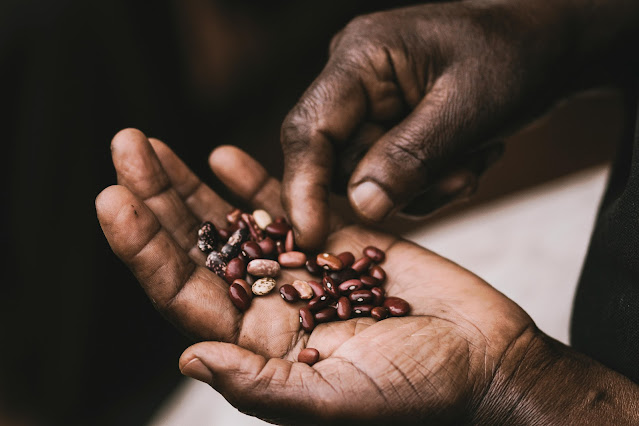A seed is a small, embryonic plant enclosed in a protective outer covering known as the seed coat. It is a vital part of the plant's life cycle, representing the primary means by which many plants reproduce and disperse to new locations. Seeds are not just the starting point of a plant's life; they are also a powerhouse of genetic information and stored nutrients, ensuring the next generation's growth and survival.
The Structure of a Seed
A seed is composed of three main parts:
1. Embryo: This is the young plant itself, which will grow into a mature plant. The embryo consists of the radicle (the root precursor), the hypocotyl (the stem precursor), the plumule (the shoot and leaf precursor), and one or more cotyledons (seed leaves).
2. Endosperm: This is the nutrient-rich tissue that provides food to the growing embryo. The endosperm can be rich in starch, proteins, and oils, serving as a critical energy source during germination.
3. Seed Coat: This is the outer protective layer that shields the embryo and endosperm from physical damage, dehydration, and disease. The seed coat also plays a role in controlling the timing of germination by responding to environmental conditions.
The Role of Seeds in Plant Life
Seeds are essential for several reasons:
Reproduction: Seeds are the primary means of reproduction for most flowering plants. They allow plants to spread their genetic material across various distances and environments, promoting diversity and adaptation.
Dormancy and Survival: Seeds can remain dormant for extended periods, allowing plants to survive unfavorable conditions. When the environment becomes conducive, seeds germinate and give rise to new plants.
Food Source: Seeds are packed with nutrients, making them a crucial food source for humans and animals. Grains like wheat, rice, and corn, as well as nuts and legumes, are all seeds that form the backbone of our diets.
Agriculture and Horticulture: In agriculture, seeds are fundamental for crop production. Farmers select and plant seeds to grow food, fiber, and ornamental plants. Seed selection and breeding are crucial for improving crop yields and resistance to pests and diseases.
Seed Germination
The process of seed germination marks the beginning of a seed's transformation into a new plant. It involves several steps:
1. Imbibition: The seed absorbs water, swelling and breaking the seed coat. This rehydrates the dormant tissues and activates metabolic processes.
2. Activation of Enzymes: Water triggers the activation of enzymes that break down the stored nutrients in the endosperm, making them available to the growing embryo.
3. Emergence of the Radicle: The radicle, or embryonic root, emerges first, anchoring the plant and absorbing water and nutrients from the soil.
4. Shoot Development: The hypocotyl elongates, pushing the plumule above the soil surface. The cotyledons may also emerge, providing initial photosynthesis until true leaves develop.
Types of Seeds
Seeds come in various shapes, sizes, and types, each adapted to different environments and modes of dispersal:
A. Monocotyledonous Seeds: These seeds, like those of grasses and lilies, have one cotyledon. They typically have a simpler structure and are adapted to rapid growth and dispersal.
B. Dicotyledonous Seeds: These seeds, like beans and sunflowers, have two cotyledons. They often contain a significant amount of stored food, supporting the seedling's growth.
C. Naked Seeds: Found in gymnosperms like pines and firs, these seeds are not enclosed in a fruit. They are often dispersed by wind.
D. Enclosed Seeds: Found in angiosperms, these seeds are enclosed within a fruit. The fruit aids in seed dispersal by attracting animals that eat the fruit and later excrete the seeds.
Importance of Seeds in Ecosystems
Seeds play a crucial role in maintaining biodiversity and ecosystem health:
Regeneration: Seeds enable plant species to regenerate and recover after disturbances like fires, floods, or human activities.
Habitat and Food: Seeds contribute to the food web, providing sustenance for a variety of animals, including birds, insects, and mammals.
Soil Health: Plants that grow from seeds help stabilize the soil, prevent erosion, and improve soil fertility through processes like nitrogen fixation.
Conclusion: Seeds are much more than tiny packets of life. They are essential for plant reproduction, survival, and growth. By understanding the structure, function, and importance of seeds, we can better appreciate the intricate and vital role they play in our world. Whether in natural ecosystems or agricultural fields, seeds are the foundation of life, sustaining plants and, ultimately, all life on Earth.




0 Comments